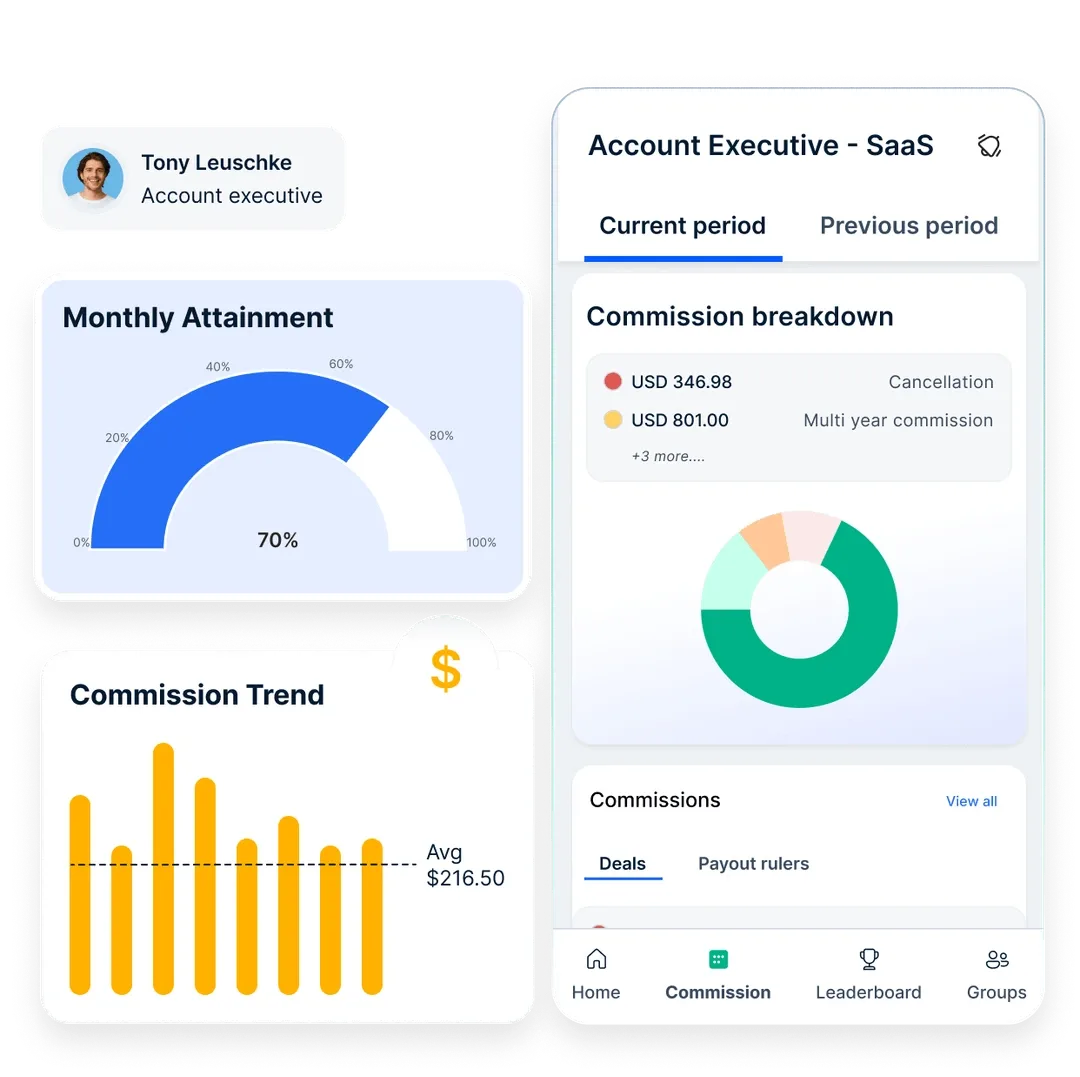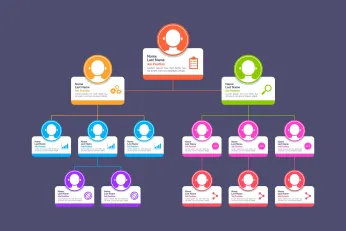How to Analyze Sales Performance and Improve Revenue
Analyzing sales performance isn’t just about tracking revenue—it’s about understanding what drives success. By evaluating key metrics and spotting trends, businesses can refine strategies and improve close rates. This guide breaks down the essential steps to turn data into actionable insights
On this page
How to analyze sales performance" is a question that often resonates in the corridors of businesses, big and small. In an era dominated by data-driven strategies, dissecting sales metrics is not just about counting revenue but understanding the dynamics that drive those numbers.
Businesses that consistently evaluate their sales data can uncover patterns, identify inefficiencies, and refine strategies for better growth. In fact, a McKinsey study found that companies that analyze their sales performance effectively achieve 33% higher close rates.
With sales analytics becoming a key competitive advantage, the real challenge isn’t collecting data—it’s knowing how to interpret and act on it.
In this guide, we will break down the essential steps to analyze sales performance and turn insights into meaningful improvements.
What is sales performance analysis?
Sales performance analysis is the process of evaluating sales data to understand how well a business, team, or individual salesperson is performing. It involves tracking key metrics like revenue, conversion rates, deal size, and sales cycle length to identify trends, strengths, and areas for improvement.
By analyzing sales performance, businesses can pinpoint what’s driving success, uncover inefficiencies, and adjust their strategies to improve results. This data-driven approach helps in optimizing sales processes, enhancing customer interactions, and ultimately boosting revenue growth.
Why is it important to analyze sales performance?
Analyzing sales performance helps you understand what’s working, what’s not, and where to improve. It provides data-driven insights that drive smarter decisions and better results. Here’s why it matters:
- Identify strengths and gaps: See which products, services, or strategies bring in the most revenue and where adjustments are needed.
- Improve sales forecasting: Use past trends to predict future demand, set realistic goals, and allocate resources wisely.
- Refine sales strategies: Evaluate pricing, sales tactics, and customer interactions to improve conversions.
- Boost team performance: Track individual and team progress to provide targeted training, recognize top performers, and drive motivation.
- Maximize return on investment: Focus on the most effective sales channels and campaigns while eliminating wasteful spending.
- Strengthen customer relationships: Understand customer preferences and buying patterns to personalize outreach and improve satisfaction.
- Stay ahead of competitors: Benchmark performance against industry standards and adapt to changing market trends.
Regular sales analysis keeps your strategy sharp, helping you drive consistent growth and better business outcomes.
Key sales metrics to analyze sales performance effectively
Sales performance analysis helps businesses measure effectiveness, identify gaps, and improve revenue. By using sales performance analytics, companies can analyze sales metrics that drive decision-making and long-term success. Below are the most important metrics and how to analyze sales data effectively.
1. Revenue growth
This metric tracks how much a company’s revenue has increased or decreased over a specific period. It helps businesses assess overall sales performance and identify trends that impact revenue.
How to Analyze:
- Compare revenue across different timeframes (monthly, quarterly, yearly) to identify growth patterns.
- Break down revenue by product, region, or sales rep to pinpoint areas contributing to or hindering growth.
- If revenue is declining, analyze pricing strategies, market demand, customer retention, and competition.
Formula:
Revenue Growth (%)= (Current Period Revenue−Previous Period Revenue/Previous Period Revenue )×100
If growth is stagnant, assess pricing, market demand, and sales strategies.
2. Sales conversion rate
The sales conversion rate measures the percentage of leads that turn into paying customers. A higher conversion rate means a more effective sales process, while a lower rate indicates potential inefficiencies.
How to Analyze:
- Calculate conversion rates by dividing the number of closed deals by the total number of leads.
- Track conversion rates at different stages of the sales funnel to identify where leads drop off.
- If conversion rates are low, evaluate lead qualification, sales messaging, and follow-up speed to improve effectiveness.
Formula:
Sales Conversion Rate (%)=( Number of Closed Deals / Total Leads )×100
If conversion rates are low, evaluate sales pitch effectiveness, lead nurturing, and customer objections.
3. Average deal size
This metric shows the average revenue generated per closed deal. It helps businesses assess sales strategies and pricing effectiveness.
How to Analyze:
- Divide total revenue by the number of closed deals within a specific period.
- Compare deal sizes across different customer segments and industries to identify trends.
- If deal sizes are decreasing, analyze discounting patterns, pricing structures, and upselling opportunities.
Formula:
Average Deal Size= Total Revenue / Number of Closed Deals
A drop in deal size may indicate excessive discounting or weak negotiation strategies.
4. Sales cycle length
The sales cycle length measures the time it takes to close a deal from initial contact to final sale. A shorter cycle often means higher efficiency, while a longer one can indicate delays.
How to Analyze:
- Track how long prospects spend at each stage of the sales funnel.
- Identify bottlenecks, such as slow follow-ups, customer objections, or lengthy contract approvals.
- Shortening the sales cycle can improve revenue flow, so consider automating processes and training sales reps to move deals forward faster.
Formula:
Sales Cycle Length= Total Time Taken to Close Deals / Number of Closed Deals
Reducing cycle length improves revenue predictability and cash flow.
5. Customer acquisition cost (CAC)
CAC measures the total expense incurred to acquire a new customer, including marketing and sales costs. A high CAC can reduce profitability if not balanced with strong revenue growth.
How to Analyze:
- Calculate CAC by dividing total marketing and sales expenses by the number of new customers in a given period.
- Compare CAC to customer lifetime value (CLV) to ensure long-term profitability.
- If CAC is too high, optimize marketing spending, improve lead qualification, and focus on higher-converting channels.
Formula:
CAC= Total Sales and Marketing Costs/Number of New Customers Acquired
A high CAC suggests inefficient spending or targeting the wrong audience
6. Customer lifetime value (CLV)
CLV estimates the total revenue a customer will generate for the business throughout their relationship. A higher CLV means better customer retention and profitability.
How to Analyze:
- Multiply average purchase value by purchase frequency and customer lifespan.
- Compare CLV with CAC to assess profitability. If CLV is lower than CAC, the business may be overspending on acquiring customers.
- To increase CLV, focus on customer retention strategies, loyalty programs, and upselling.
Formula:
CLV = Average Purchase Value×Purchase Frequency×Customer Lifespan
If CLV is lower than CAC, retention strategies need improvement
7. Win rate
Win rate measures the percentage of deals won out of total sales opportunities. A low win rate can indicate sales process inefficiencies, while a high rate suggests strong sales performance.
How to Analyze:
- Calculate win rate by dividing the number of closed deals by the total deals pursued.
- Review lost deal data to identify patterns—whether due to pricing, competition, or product fit.
- Improve win rates by refining sales pitches, addressing common objections, and strengthening value propositions.
Formula:
Win Rate (%)= (Number of Closed Deals/Total Sales Opportunities )×100
A low win rate may suggest pricing issues or strong competition.
8. Lead response time
This metric tracks how quickly sales reps respond to new leads. Faster response times often lead to higher conversion rates.
How to Analyze:
- Measure the time between lead generation and the first follow-up.
- Compare response times with conversion rates to see if delays impact sales performance.
- If response times are slow, consider automating lead follow-ups and setting response time targets for sales reps.
Formula:
Lead Response Time= Total Time Taken to Respond/ Number of Leads Responded To
If response time is high, sales automation tools can improve efficiency.
9. Churn rate
Churn rate measures the percentage of customers who stop doing business with a company within a given period. A high churn rate can indicate customer dissatisfaction or a lack of retention efforts.
How to Analyze:
- Calculate churn by dividing the number of lost customers by the total at the start of the period.
- Identify common reasons for churn, such as poor customer service, product issues, or better competitor offerings.
- Reduce churn by improving customer support, enhancing product quality, and implementing loyalty programs.
Formula:
Churn Rate (%)= ( Number of Lost Customers / Total Customers at Start of Period )×100
A high churn rate signals retention challenges that need immediate attention.
10. Quota attainment
Quota attainment evaluates how well sales reps meet their assigned sales targets. It reflects individual and team performance.
How to Analyze:
- Compare actual sales figures against assigned quotas.
- Identify trends among top-performing sales reps to replicate success.
- If quotas are frequently missed, reassess sales targets, provide additional training, or adjust compensation incentives.
Formula:
Quota Attainment (%)=( Actual Sales / Sales Quota )×100
If quotas are frequently missed, reassess targets and training needs.
With sales performance analysis, businesses can analyze sales metrics that drive revenue and efficiency. The key to how to analyze sales data effectively is identifying patterns, improving weak areas, and using data-driven strategies for sustainable growth. Regular monitoring of these metrics ensures better decision-making and long-term success.
10 Tips and best practices to analyze sales performance
Using an effective sales performance strategy, companies can not only record but also measure and match sales performance across industry benchmarks to identify the current level. This helps bridge the gap between the actual and desired levels of efficiency.
In a case study on how to analyze sales by Elizabeth Mac Halele, she explains that looking at sales figures should be from many different aspects and not just at the items and their sale value or the dollars of revenue you made over the last couple of months.
Businesses must be able to consider various approaches by analyzing more minor things in detail, such as
- Singular item performance
- Cross-referencing SKU and sale volume
- The sale through rate is over different periods of time, etc.
Here are 10 tips that you can implement in your business to help the process of analyzing sales:
1. Set clear objectives
First and foremost, it is essential to set the right goals and objectives for the sales team to achieve.
Knowing clear objectives helps sales personnel work towards achieving those goals. It helps the sales team to prepare themselves, be clear about their overall and individual targets, and make use of sales tools that can enable them to their goal achievement. Setting clear objectives includes:
- Preparing and coming up with the yearly and monthly targets for the sales team
- Giving out individual sales targets for sales personnel
- Laying out clear guidelines to achieve sales targets
- Enable sales personnel with the tools and techniques needed to achieve the target
2. Track KPIs
KPI or Key Performance Indicators help sales performance measurement. Measuring KPIs helps in establishing the performance levels by looking at some indicators. Here are some essential KPIs that sales managers should be looking at:
- Annual contract value: The value of total customer sale volume. This includes the actual sale volume achieved, cross-selling, or upselling opportunity that has been gained from the customer.
- Customer lifecycle value: The entire time and volume of purchase spent by the customer with the brand is an essential metrics of sales performance in a company
- Customer retention rate: The value of customers retained by analyzing repeat purchases by existing customers is a crucial metric for analyzing sales performance and the linked customer satisfaction value.
- Conversion rate: The amount of leads that are present in the pipeline and the number of leads that convert to customers is an essential parameter for sales performance
3. Segment data
Customer segmentation using the data collected by the sales personnel is an essential factor for sales performance. Using segmentation techniques, customers can be prompted to buy the right products, increasing sales turnover and satisfaction.
Segmentation not only helps with better customer targeting and, therefore better sales conversion but also makes the sales process easy by offering the right product to the right customer.
Customer data can be segmented using the following criteria:
- Demographics such as age, gender, location, etc
- Customer preferences
- Past purchase history
- The competitive product that is used by the customer
- Average spending power or capability
4. Use a CRM system
A CRM system helps in recording customer performance and customer satisfaction is an essential tool that can help with tracking customer needs, wants, customer purchase history, etc.
CRM and sales platform work side by side to improve sales performance and record data so customers can be serviced well after the sales process concludes.
It encourages repeat sales and referrals from a satisfied customer. The data gathered by CRM software helpsthe sales team with crucial business insights such as:
- Pipeline analysis
- Lead conversion and dropout rate
- Length and turnaround time of sales call
- Sales team performance with customer satisfaction score
- Repeat purchase history or loss rate with reason
5. Analyze sales funnel
A sales funnel is the entire journey from start to end for a customer when buying a product.
Using a sales funnel, you can predict how potential customers behave using the sales funnel. The sales funnel helps customers understand how they come to know about the brand once they realize that they have a need and how they end up purchasing a product.
It is most important to identify where the customers tend to wean off and not purchase the brand offering and why this happens.
- The top end of the funnel is marketing - where the brand needs to make the customer aware of their pain point and then introduce the product
- The middle part is the sales - where the actual sales take place between the two parties
- The end of the funnel is the happy and satisfied customer who comes through the sales cycle and the sales funnel.
6. Compare periods
Period over-period analysis and Year-on-year analysis are two essential tools that help measure sales performance over two periods.
Using this method, performance metrics can be measured using different KPIs over two different periods to understand many vital insights over two measurable periods of time, such as:
- Marketing efforts and their analytical reports to see the difference
- The Effect of Marketing Efforts on sales Performance
- Difference in turnover and sales revenue in the two periods
- Customer satisfaction, repeat purchases, and satisfaction score
- Overall growth between the two periods of time
7. Competitor analysis
Competitor analysis helps in understanding the industry standards and competitor techniques used in the market.
Using this analysis, companies can analyze the market and check for customer trends when compared to competitor products.
Competitor analysis also helps with learning from the new trends in the market and fine-tuning the sales process.
- Research methodology into competitor brands, products, and services
- Helps with the value proposition of the competitor's product and our product
- Check for market trends and competitor techniques and learn from them
- Identify weaknesses of competitors and capitalize on that
- Helps in establishing an overall market benchmark using competitor product reviews
8. Customer insights
Customer insights or customer feedback is a major tool that helps assess sales performance metrics.
If the sales team does a good job, customer satisfaction is high, the repeat purchases is high, the sales team gets more referrals, and the customer feedback and customer insight is also positive.
Using a detailed method of capturing customer insight, data can be collected, organized, and studied, and sales performance can be improved based on this data. Some modes for collecting customer data are:
- Phone-based survey
- Website survey form
- Mobile-based poll option
- POS feedback collection
- Social media and digital testimonials
9. Sales team assessment
Assessment is part and parcel of any organization. Constant analysis and assessment help in keeping things on track and also assist with compliance with sales policies.
Sales teams can be assessed using online and virtual assessment tools today, thanks to sales enablement and training softwares. These tools help assess various skills of a salesperson while also enabling and training them in the proper manner based on their performance. Some modes of sales assessment are:
- Online Theoretical tests
- Practical case-based scenario assessment
- Communication assessment
- Mock Pitch test
- Verbal tests using role-plays
10. Visualize data
Data visualization is an effective way to enhance sales performance and analyze them over time.
Sales data visualization makes use of graphs, charts, analytical tools using sales dashboards, marketing analytical reports, and many other such visual aids to help organize and display data in a straightforward way to put things in perspective.
Visualization makes data easier to perceive and more effectively delivered to the intended recipient so that crucial sales performance-related business insight can be gained from it.
Some widespread benefits of data visualization reports include:
- Helps measure KPIs of sales performance
- It makes data decluttered and makes easy to ingest information
- Visual representation of data for better understanding
- Multiple data from various sources can be compared visually
- More effective than theoretical data and visually appealing.
Optimize sales performance with Compass

Compass simplifies sales performance management with real-time analytics, automated incentive compensation, and gamification to keep your team motivated and results-driven. Get a centralized view of sales data, track key metrics, and identify performance trends with AI-powered insights.
With built-in forecasting tools, you can predict sales trends, set realistic goals, and optimize resource allocation. Automated incentive management ensures fair and transparent payouts, while gamification features like leaderboards and rewards encourage a high-performance culture.
Plus, continuous training and coaching help your sales team refine their skills and adapt to changing market demands.
Drive sales growth and efficiency with Compass—get started today!
Learn how Compass helped digital automotive platform improves sales team performance
A leading digital automotive solutions provider faced challenges in manually calculating sales agents' incentives and sharing commission data.
As they expanded, real-time commission calculations with multiple variables became problematic. In response, they integrated Compass, a sales performance management solution.
Compass automated complex commission calculations, offered real-time sales data visibility, and enhanced sales representative productivity.
Features included performance leaderboards and detailed user data based on regions and designation.
Want to see similar results and boost your sales team performance? Connect with our sales performance and commission experts now.
Conclusion
It is essential for companies to adopt a strategy that helps them identify how their sales performance is and how to improve it.
Using an effective sales performance analysis strategy not only can companies and businesses help fine-tune sales efforts but also helps in the overall improvement of business turnover.
Sales performance software is one of the many ways to record and implement various strategies that help improve sales techniques and help with improving the sales performance of the company.
These 10 tips mentioned above can help companies implement a simple yet effective strategy to help companies grow and prosper in today's competitive world.














